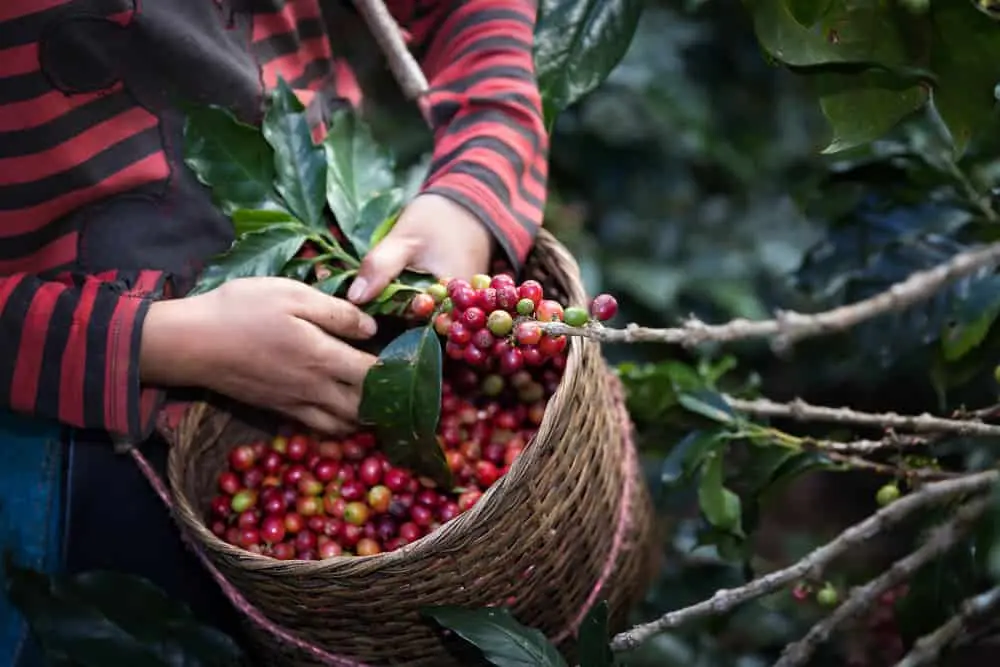If you’re a coffee enthusiast with a passion for the perfect cup of joe, have you ever considered turning that passion into a profitable business? With the growing demand for high-quality, freshly roasted coffee beans in the specialty coffee industry, starting a coffee roasting business can be a rewarding venture for those who are truly passionate about coffee.
In this comprehensive guide, we will walk you through the process of starting your own coffee roasting business, from market research and planning to sourcing and selecting coffee beans, setting up coffee roasting equipment, mastering coffee roasting techniques, branding and packaging, marketing, operations and management, and overcoming challenges for success.
Whether you’re a coffee aficionado looking to turn your hobby into a business or an entrepreneur seeking to enter the booming specialty coffee market, this guide will provide you with valuable insights, practical tips, and expert advice to help you get started on your journey to turning your passion for coffee into profit.
So grab a cup of your favorite coffee, sit back, and let’s explore the exciting world of coffee roasting and how you can start your own coffee roasting business!
Market Research and Planning
Before diving into the coffee roasting business, it’s crucial to conduct thorough market research and create a solid business plan. This step sets the foundation for your entire venture and helps you make informed decisions along the way.

Identify your target market: Understanding your target market is essential in any business. Determine who your ideal customers are, their coffee preferences, and their buying habits. Are you targeting local coffee shops, specialty grocery stores, or direct-to-consumer online sales? Knowing your target market will guide your marketing efforts, product offerings, and pricing strategies.
Analyze the competition: Research and analyze your competition in the coffee roasting industry. Identify their strengths, weaknesses, and unique selling propositions. This will help you identify gaps in the market and differentiate your business from competitors.
Determine your business model: Decide on your business model, whether it’s a brick-and-mortar location, an online store, or a combination of both. Consider factors such as location, rent, equipment costs, staffing, and operational logistics. Outline your business structure, sales channels, and pricing strategy in your business plan.
Develop a business plan: Create a comprehensive business plan that includes your company overview, mission and vision, market analysis, competitive analysis, marketing and sales strategies, financial projections, and operational details. A well-structured business plan will serve as your roadmap and be a valuable tool for securing financing and attracting investors.
Set a budget: Determine your startup costs and ongoing expenses, including equipment, raw materials, labor, marketing, and overheads. Set a realistic budget to ensure you have the necessary funds to start and sustain your coffee roasting business. Consider seeking advice from financial professionals if needed.
Obtain necessary permits and licenses: Research and obtain any required permits, licenses, or certifications to legally operate a coffee roasting business in your area. This may include health department permits, food handling certifications, and local business licenses. Compliance with regulations is crucial for running a legitimate and successful business.
Create a branding and marketing strategy: Develop a strong branding and marketing strategy that resonates with your target market. Choose a unique and memorable brand name, logo, and packaging that reflects your coffee roasting philosophy and appeals to your customers. Create a marketing plan that includes online and offline strategies such as social media, content marketing, email campaigns, events, and collaborations.
Sourcing and Selecting Coffee Beans
As a coffee roaster, the quality of your coffee beans is crucial to the flavor and aroma of your final product. Sourcing and selecting the right coffee beans is a critical step in the coffee roasting process. Here are some key considerations to keep in mind:
Direct Trade vs. Fair Trade: When sourcing coffee beans, you have the option to choose between direct trade and fair trade. Direct trade involves establishing direct relationships with coffee farmers and paying them a premium for their high-quality beans. This fosters transparency, sustainability, and ethical practices. Fair trade, on the other hand, focuses on supporting small-scale farmers and ensuring they receive fair prices for their beans. Research and choose a sourcing approach that aligns with your values and business philosophy.
Coffee Bean Origins: The origin of coffee beans greatly impacts their flavor profile. Different coffee-growing regions around the world produce coffee beans with unique characteristics due to variations in soil, altitude, climate, and processing methods. Research and experiment with different coffee origins to offer a diverse range of flavor profiles to your customers. Some popular coffee origins include Ethiopia, Colombia, Brazil, Costa Rica, and Kenya.

Quality and Freshness: The quality and freshness of coffee beans greatly affect the flavor and aroma of the roasted coffee. Look for specialty-grade coffee beans that are carefully grown, harvested, and processed to ensure consistent quality. Check for certifications such as Specialty Coffee Association (SCA) scores or Cup of Excellence awards, which indicate high-quality beans. Additionally, ensure that the coffee beans are freshly roasted and shipped to you to maintain their optimal flavor profile.
Flavor Profile and Roasting Profile: Consider the flavor profile you want to achieve in your roasted coffee when selecting coffee beans. Different coffee beans have distinct flavor notes such as fruity, floral, chocolatey, or nutty. Choose beans that align with your desired flavor profile and consider how they will complement your preferred roasting profile. Experiment with different coffee beans and roasting techniques to achieve the desired flavor profile for your coffee.
Relationship with Suppliers: Building strong relationships with coffee bean suppliers is essential for a successful coffee roasting business. Establish open communication channels, visit coffee farms if possible, and build trust with your suppliers. Maintaining a positive relationship with your suppliers can lead to better pricing, reliable sourcing, and access to exclusive coffee beans.
Consistency and Reliability: Consistency and reliability in your coffee bean sourcing are key to maintaining the quality of your roasted coffee. Ensure that your suppliers can provide consistent quantities of coffee beans that meet your quality standards. Establish backup suppliers to mitigate any potential disruptions in the supply chain.
Coffee Roasting Equipment and Setup
Investing in the right coffee roasting equipment and setting up a suitable roasting environment is crucial for the success of your coffee roasting business. Here are some key considerations when it comes to coffee roasting equipment and setup:
Roasting Equipment: There are various types of coffee roasting equipment available in the market, ranging from small batch roasters to large-scale commercial roasters. Consider your production volume, budget, and future growth plans when choosing the right roasting equipment for your business. Some popular types of coffee roasting equipment include drum roasters, fluid bed roasters, and air roasters. Research and compare different roasting equipment options, read reviews, and consider factors such as capacity, roasting profiles, and ease of use.
Ventilation and Exhaust System: Coffee roasting produces smoke and chaff, which requires proper ventilation and exhaust system to ensure a safe and healthy working environment. Depending on the size and type of roasting equipment, you may need to install a ventilation and exhaust system that meets local safety and building codes. Consult with professionals and ensure that your roasting setup complies with all the necessary regulations.
Roasting Area and Layout: The layout and organization of your roasting area can greatly impact the efficiency and safety of your coffee roasting operations. Plan your roasting area layout to optimize workflow, minimize hazards, and ensure easy access to all the necessary equipment and supplies. Consider factors such as safety regulations, space requirements for roasting equipment, storage of green and roasted coffee beans, and access to utilities such as water, electricity, and gas.
Roasting Profiles and Monitoring Tools: Roasting profiles are the specific time and temperature settings used to achieve desired roast levels and flavor profiles. Invest in a roasting software or system that allows you to create and monitor roasting profiles for consistency and quality control. Additionally, consider investing in monitoring tools such as thermocouples or data loggers to track and record temperature and other parameters during the roasting process. This can help you fine-tune your roasting profiles and ensure consistent results.
Maintenance and Safety: Proper maintenance and safety practices are essential for the smooth and safe operation of your coffee roasting equipment. Follow manufacturer’s guidelines for regular cleaning, calibration, and maintenance of your roasting equipment to ensure optimal performance and longevity. Train your staff on safe operating procedures, including handling hot equipment, managing smoke and chaff, and using fire safety measures. Have fire extinguishers, first aid kits, and other safety equipment readily available in your roasting area.
Energy Efficiency: Coffee roasting requires significant energy usage, so consider investing in energy-efficient roasting equipment and practices to minimize your environmental impact and operational costs. Look for roasting equipment with energy-saving features such as insulation, digital controls, and efficient burners. Additionally, consider using renewable energy sources such as solar or wind power to power your roasting operations.
Coffee Roasting Techniques and Recipes
Mastering different coffee roasting techniques and experimenting with various recipes is a key aspect of running a successful coffee roasting business. Here are some tips and recipes to help you enhance your coffee roasting skills:

Understanding Roasting Profiles: Roasting profiles are the specific time and temperature settings used to achieve different roast levels and flavor profiles. Experiment with different roasting profiles to understand how they impact the flavor, aroma, and body of the coffee beans. Keep detailed records of your roasting profiles and tasting notes to track the results and make adjustments as needed.
Developing Your Own Roasting Style: Developing your own unique roasting style can set your coffee roasting business apart from others. Experiment with different roasting techniques, such as light, medium, and dark roasts, and find a style that aligns with your taste preferences and target market. Consider factors such as bean origin, processing method, and customer preferences when developing your roasting style.
Cupping and Tasting: Cupping is the process of evaluating the sensory characteristics of coffee beans, including aroma, flavor, acidity, body, and aftertaste. Regular cupping sessions can help you refine your roasting techniques and evaluate the quality of your coffee beans. Experiment with different brewing methods, such as pour-over, espresso, and French press, to taste and evaluate the roasted coffee beans in different ways.
Blending and Flavoring: Blending different coffee beans can create unique flavor profiles and offer a wide range of options to your customers. Experiment with different coffee bean origins, processing methods, and roast levels to create interesting blends that cater to different taste preferences. Additionally, consider flavoring options such as vanilla, caramel, or hazelnut to add variety to your coffee offerings.
Recipe Development: Experiment with different coffee recipes to create signature blends or flavored coffees that stand out in the market. Try adding different proportions of coffee beans, varying roasting profiles, and unique flavoring ingredients to develop new recipes. Test and refine your recipes based on customer feedback and market demand to continuously innovate and improve your coffee offerings.
Consistency and Quality Control: Consistency and quality control are crucial in the coffee roasting business. Develop standard operating procedures (SOPs) for your roasting operations, including measurements, timings, and quality checkpoints, to ensure consistency in your coffee roasts. Regularly monitor and evaluate the quality of your coffee beans, and make necessary adjustments to maintain high-quality standards.
Branding, Packaging, and Marketing
Branding, packaging, and marketing play a crucial role in the success of your coffee roasting business. Creating a strong brand image, designing attractive packaging, and implementing effective marketing strategies can help you attract customers, differentiate your products, and drive sales. Here are some tips to ace your branding, packaging, and marketing efforts:
Branding: Your brand is the personality and identity of your coffee roasting business. Develop a unique and memorable brand name, logo, and color scheme that reflects your values, target market, and positioning in the market. Create a brand story that resonates with your customers and communicates the uniqueness of your coffee offerings. Consistently apply your brand elements across all touchpoints, including your website, social media, packaging, and promotional materials, to build brand recognition and loyalty.
Packaging: Packaging plays a critical role in attracting customers and conveying the quality and value of your coffee beans. Invest in well-designed packaging that not only protects the freshness of your coffee beans but also visually appeals to your target audience. Consider using eco-friendly and sustainable packaging materials to align with consumer preferences for environmentally conscious products. Include clear and informative labels that highlight the origin, roast level, flavor notes, and brewing recommendations to educate and engage customers.

Marketing: Implementing effective marketing strategies is essential for promoting your coffee roasting business and driving sales. Create a comprehensive marketing plan that includes online and offline channels to reach your target audience. Leverage social media platforms, such as Instagram, Facebook, and Twitter, to showcase your coffee products, share behind-the-scenes stories, and engage with your customers.
Build a professional website that includes product information, online ordering options, and customer testimonials. Utilize search engine optimization (SEO) techniques to improve your website’s visibility in search results and attract organic traffic. Consider hosting coffee tasting events, partnering with local cafes or restaurants, and participating in farmers’ markets or food festivals to reach a wider audience.
Customer Relationship Management: Building strong relationships with your customers is crucial for repeat business and word-of-mouth marketing. Offer exceptional customer service by being responsive, knowledgeable, and attentive to customer inquiries, feedback, and complaints. Personalize interactions with your customers and create a sense of community by sending regular newsletters, offering special promotions, and hosting coffee-related events. Encourage customer reviews and testimonials, and share them on your website and social media to build trust and credibility.
Continuous Innovation: To stay ahead in the competitive coffee market, it’s important to continuously innovate and differentiate your coffee offerings. Keep abreast of coffee industry trends, consumer preferences, and competitor activities to identify opportunities for innovation. Experiment with new coffee beans, roast profiles, brewing methods, and flavoring options to keep your coffee menu fresh and exciting. Listen to customer feedback and adapt your products and marketing strategies accordingly to meet their evolving needs and preferences.
Operations and Management
Efficient operations and management are crucial for the smooth functioning of your coffee roasting business. Properly managing your production, inventory, finances, and team can help you streamline operations, reduce costs, and maximize profits. Here are some key considerations for effective operations and management:
Production and Inventory Management: Develop a production plan that takes into account your coffee roasting capacity, demand projections, and inventory levels. Ensure that you have enough green coffee beans in stock to meet your production needs, while also managing inventory turnover to maintain freshness and quality. Implement a system for tracking and managing inventory, including organizing and labeling coffee beans, monitoring shelf life, and rotating stock as needed. Regularly review and adjust your production and inventory plans based on sales trends, customer feedback, and market conditions.
Financial Management: Proper financial management is essential for the long-term success of your coffee roasting business. Develop a budget that includes all your expenses, such as green coffee beans, equipment, utilities, packaging, marketing, and labor costs. Monitor your cash flow regularly to ensure that you have enough funds to cover expenses and invest in growth initiatives. Keep accurate records of your sales, expenses, and profits to track the financial performance of your business. Consider working with a qualified accountant or financial advisor to ensure compliance with tax laws, manage financial risks, and make informed financial decisions.
Team Management: Your team plays a critical role in the success of your coffee roasting business. Hire and train skilled and knowledgeable staff who share your passion for coffee and align with your business values. Clearly communicate expectations, roles, and responsibilities to your team, and provide regular feedback and recognition to motivate and engage them. Create a positive work culture that fosters collaboration, creativity, and continuous improvement. Invest in professional development opportunities to enhance the skills and knowledge of your team members and empower them to contribute to the success of your business.
Quality Control: Consistently maintaining high-quality coffee beans and roasted coffee is crucial for building a strong reputation and retaining customers. Implement a comprehensive quality control program that includes regular cupping sessions, sensory evaluations, and quality checks at various stages of the coffee roasting process. Develop standard operating procedures (SOPs) for coffee roasting, packaging, and storage to ensure consistency and quality. Continuously monitor and improve your coffee quality based on customer feedback, market trends, and industry standards.
Business Expansion: As your coffee roasting business grows, consider opportunities for expansion and diversification. Explore options such as opening a coffee shop or cafe, offering wholesale coffee supply to local cafes and restaurants, or selling coffee-related merchandise. Conduct thorough market research, feasibility studies, and financial analysis before expanding to ensure that you have the resources and demand to support the expansion. Develop a strategic growth plan that includes goals, timelines, and action steps, and regularly review and update it based on market conditions and business performance.
Challenges and Tips for Success
Starting and running a coffee roasting business can come with its fair share of challenges. However, with careful planning and execution, you can overcome these challenges and set yourself up for success. Here are some common challenges you may encounter and valuable tips to help you navigate them:
Competition: The coffee industry can be highly competitive, with many established players and new entrants vying for market share. To succeed, differentiate your brand by offering unique coffee blends, highlighting your sourcing and roasting techniques, and delivering exceptional customer service. Develop a strong brand identity and engage in effective marketing strategies to stand out in the crowded market.
Sourcing Quality Coffee Beans: Sourcing high-quality green coffee beans consistently can be a challenge. Develop relationships with trusted coffee importers, farmers, and co-ops to ensure a reliable supply of fresh and specialty-grade coffee beans. Stay updated with market trends, sourcing practices, and certifications to make informed decisions and maintain the quality of your coffee beans.
Managing Costs: Roasting coffee requires significant investment in equipment, raw materials, labor, and other operational expenses. Managing costs effectively is crucial to ensure profitability. Keep track of your expenses, negotiate pricing with suppliers, optimize production processes, and monitor overhead costs. Regularly review and adjust your pricing strategy to align with your costs and market conditions.
Quality Control: Consistently maintaining high-quality coffee beans and roasted coffee can be challenging. Implement strict quality control measures, such as cupping sessions, sensory evaluations, and adherence to standard operating procedures (SOPs). Train your team on quality control techniques and continuously monitor and improve your coffee quality to meet customer expectations and maintain a strong reputation.
Seasonality and Fluctuating Demand: The demand for coffee can vary depending on factors such as seasonality, local market trends, and economic conditions. Prepare for fluctuations in demand and develop strategies to manage seasonal variations. Diversify your product offerings, explore new market segments, and leverage online sales and marketing channels to mitigate the impact of changing demand.
Building a Customer Base: Building a loyal customer base can be challenging in a competitive market. Invest in building strong relationships with your customers through exceptional service, personalized experiences, and engagement on social media and other marketing channels. Offer promotions, discounts, and loyalty programs to incentivize repeat business and word-of-mouth referrals.
Regulatory and Compliance Requirements: The coffee industry is subject to various regulations and compliance requirements, including food safety, labeling, and certifications. Stay informed about these regulations and ensure that your business complies with all applicable laws and standards. This includes proper food handling and storage practices, accurate labeling of coffee packages, and obtaining necessary certifications such as organic or fair trade, if applicable.
Continuous Learning and Adaptation: The coffee industry is constantly evolving, with new trends, technologies, and consumer preferences emerging. Stay updated with industry news, attend coffee conferences and workshops, and network with other coffee professionals to stay ahead of the curve. Continuously learn, adapt, and innovate to keep your coffee roasting business relevant and competitive.
Conclusion
Starting a coffee roasting business can be a fulfilling and rewarding endeavor for coffee enthusiasts who are passionate about the art and science of roasting coffee beans. From sourcing and selecting high-quality coffee beans to roasting techniques, branding, marketing, and operations, there are several key aspects to consider when embarking on this journey.
In this comprehensive guide, we have covered the essential steps involved in starting a coffee roasting business, including conducting market research and planning, sourcing and selecting coffee beans, setting up coffee roasting equipment, mastering coffee roasting techniques and recipes, branding and marketing, operations and management, as well as overcoming challenges and tips for success.
Remember, success in the coffee roasting industry requires dedication, hard work, and continuous learning. Stay updated with industry trends, stay true to your passion for coffee, and strive for excellence in every aspect of your business. With careful planning, smart execution, and a commitment to delivering exceptional quality and service, you can turn your passion for coffee into a profitable business venture.
So, whether you are a seasoned coffee roaster or just starting out, we hope this guide has provided you with valuable insights and practical tips to help you kickstart your coffee roasting business and thrive in this competitive industry. Best of luck on your coffee roasting journey, and may your business brew success! Cheers to a caffeinated future!
A. I. Moon
A.I. Moon, an experienced SEO Pythonista, spends his days coding and developing web applications to help business owners. A passionate coffee enthusiast, he believes that drinking coffee fuels his creativity and productivity. His day isn't complete without the rich aroma and invigorating warmth of a perfectly brewed cup. This love for coffee inspired him to found EspressoRivo, a platform dedicated to sharing his coffee knowledge and fostering a community of passionate aficionados.






